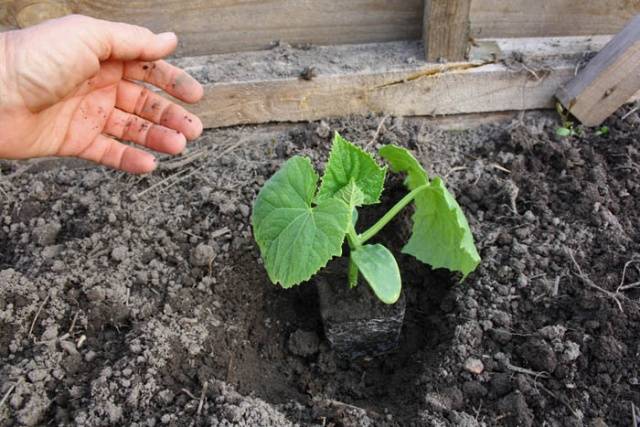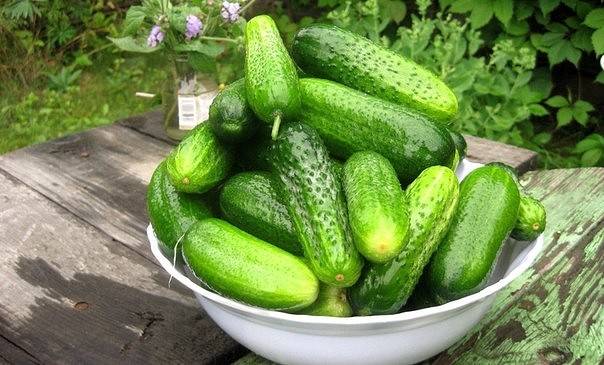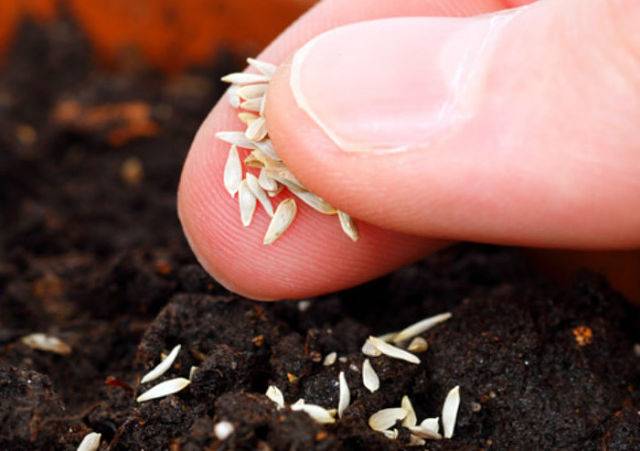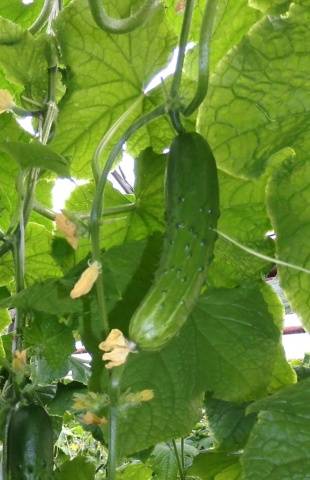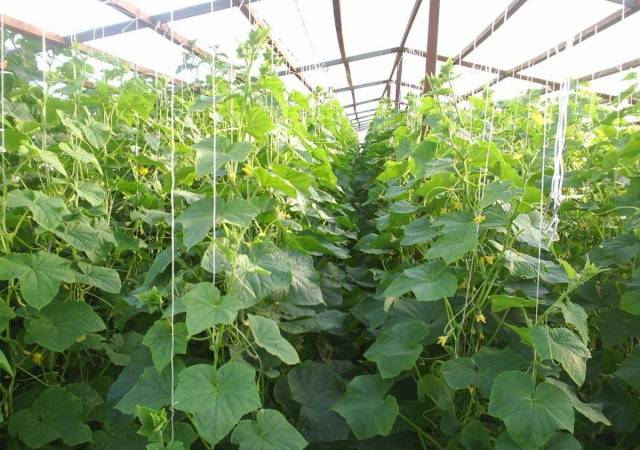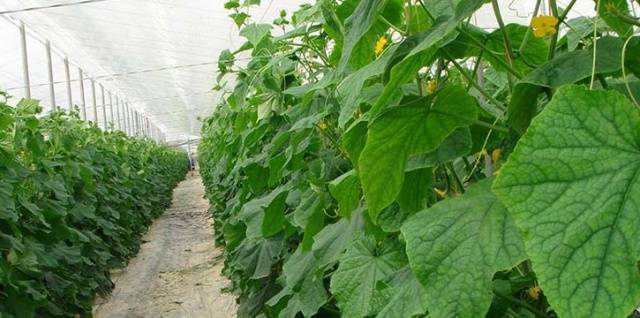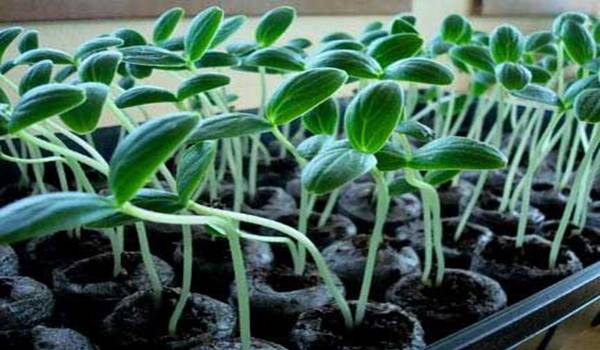Content
More recently, summer residents and gardeners knew well by name which of the varieties is intended for planting in greenhouse, and which is for open ground. Today, breeders have developed so many new varieties that it is really difficult to understand them. The question of which cucumbers for greenhouses choose is often asked on search engines and forum pages. Let's figure this out.
Introduction
To choose the right varieties of cucumbers for planting in a greenhouse, you need to decide:
- with the palatability of the fruit;
- with how exactly the plant will be pollinated;
- with what kind of hybrids and varieties are preferable;
- with a ripening period.
All this is necessary in order to better understand the seeds of the plant and get a rich harvest. This does not always work, especially for beginners.
What are the seeds
Everyone who is faced with the choice of a variety of cucumbers wants to achieve high yields, quality fruits. At the same time, industrial varieties are often found on the market, which are unlikely to be useful to summer residents.
Cucumbers are a particularly popular crop in Russia. The variety of varieties allows you to be guided when choosing also personal preferences. So that the work of the summer resident is not wasted, the choice must be made correctly. Please note that all seeds are subdivided into:
- varieties;
- hybrids.
They differ in that varietal cucumbers are the heirs of all the positive and negative qualities of their ancestors. That is why the cost of such cucumbers is somewhat lower than hybrid ones. The positive qualities of such a purchase are that the seeds can subsequently be obtained independently, selected and reintroduced into the soil. This cannot be done with hybrids.
A hybrid is a created variant of a cucumber that has completely new characteristics.
The hybrids on the packaging are marked like this - F1. All the signs of a hybrid are preserved only in one generation, the second time such cucumbers from seeds cannot be obtained, do not waste time on this.
Of course, the hybrid has a number of qualities that justify their high cost:
- disease resistance;
- high productivity;
- resistance to temperature extremes (you can get early cucumbers);
- fast speed of fruit ripening.
If you're just starting to plant cucumbers, go for hybrids. Also for greenhouses, the method is important pollination of cucumbers.
Pollination method
All cucumber seeds (varieties and hybrids) are divided according to the method of pollination into three types:
- pollinated by insects;
- self-pollinated;
- parthenocarpic.
Grow cucumbers in a greenhousepollinated by insects is very difficult. This method is very lengthy and complicated.
Flowers self-pollinated cucumbers have both stamens and pistils, so they can pollinate on their own. And here parthenocarpic varieties are tied independently, since their flowers have predominantly female characteristics.
Before choosing which cucumbers are better for planting in a greenhouse, decide what kind of harvest you are expecting:
- for salads (consumed fresh);
- universal;
- for salting.
All information is contained on the packages. Having dealt with the nuances, you can proceed to the choice of the variety.
Most popular varieties
Approaching the choice of a variety closely, you need to proceed from your own preferences and carefully study the information on the package with seeds. Having studied the information presented above, it will be much easier to decide.
Since the assortment of seeds is huge, it is impossible to list all those that can be grown in greenhouses.We present to your attention the best varieties. Among them:
- Zozulya F1;
- Courage F1;
- Hercules F1;
- Adam F1;
- F1 Legend;
- Blessed F1;
- Claudia F1;
- Buran F1.
They are all listed in the table below with a description of the variety. This is just a small part of a large list of varieties and hybrids of cucumbers for greenhouses.
Variety | Group | Pollination method | Benefits | How to plant | Yield |
|---|---|---|---|---|---|
Hector F1 | hybrid | parthenocarpic | long shelf life, very early variety | to a depth of 3-4 centimeters according to the scheme 90x50 | 6 kilograms per 1 m2 |
Buran F1 | hybrid | parthenocarpic | very early variety, ripens after 43 days | to a depth of 1.5-2 centimeters, no more than 4 plants per 1 m2 | Up to 23 kilograms per 1 m2 |
F1 legend | hybrid | parthenocarpic | high yield, early cucumbers | to a depth of 3-4 centimeters according to the scheme 50x30 | up to 20 kilograms per 1 m2 |
Hercules F1 | hybrid | bee-pollinated | high yield | to a depth of 2-3 centimeters according to the scheme 60x15 | On average, 30 kilograms per 1 m2 |
Zozulya F1 | hybrid | parthenocarpic | early variety, high yield | depth 1.5-2 centimeters according to the scheme 50x30 | 8-16 kilograms per 1 m2 |
Courage F1 | hybrid | parthenocarpic | early ripening, gives a high yield | depth 3-4 centimeters according to the scheme 50x50 | 6-8.5 kilograms |
Claudia F1 | hybrid | parthenocarpic | early cucumbers, bountiful harvest | depth 3-4 centimeters according to the scheme 50x50 | 25-27 kilograms per 1 m2 |
Adam F1 | hybrid | parthenocarpic | early with high yield | to a depth of 2-3 centimeters according to the scheme 30x70 | Up to 10 kilograms per 1 m2 |
You can also pay attention to these varieties: Moscow dude, Makar, Masha, Anyuta, White Angel, Pyzhik, Tsarsky and others. Today the choice is huge. Please note that whatever varieties end up in your consumer basket, it is important to plant them correctly.
Planting schemes and rules for growing cucumbers
You need to plant seeds in cups to the indicated depth. After that, they begin to prepare the soil in the greenhouse. Cucumber is a thermophilic culture, the soil for it must be fertile. In advance, fertilizing is carried out with mineral fertilizers, having previously made a choice of:
- peat;
- humus.
This will achieve a good result. When the plants grow up, they are transplanted into the beds in the greenhouse. Previously, the cucumbers are watered and transplanted together with a lump of earth from a glass. It is better if the soil warms up to a certain temperature. Each package contains information on this issue.
Additionally, it is necessary to maintain high humidity in the greenhouse, because cucumbers love this very much. If everything is done correctly, the harvest in the greenhouse will delight you with the abundance and speed of return.
Ripening terms
As for the timing of ripening, this parameter is also important to consider. The information is briefly indicated on the packaging. Let's deal with this issue.
All cucumbers are divided into several groups according to the degree of ripening. Even if the package does not indicate the number of days, but the group, the buyer will easily understand what it means.
So, there are four groups in total:
- early varieties (up to 42 days);
- early ripening (from 43 to 45 days);
- mid-season (up to 50 days);
- late (over 50 days).
There is a direct relationship between the degree of ripening of cucumber fruits and climatic conditions, even if you decide to plant seeds in a greenhouse.
Late varieties are better suited for warm areas and planting directly in open ground. In the middle lane and northern regions, they are almost never used, except as an experiment. Early and mid-season varieties are perfect for these climatic zones. It is believed that the earliest harvest can be expected from varieties such as Anyuta, Evita, Buran, Masha and Courage.
Having bought late-ripening cucumber seeds in central Russia, do not rush to throw them away. If planted early, they can yield excellent yields. Many gardeners also prefer winter greenhouses, which involves planting cucumbers all year round, taking short breaks.
In order to give an illustrative example of the choice of varieties of cucumber for growing in greenhouses, we suggest that you familiarize yourself with the video, where everything is set out in detail.
Conclusion
By following the rules, you can avoid the standard mistakes that make the work of a gardener go to waste. The richest crops are harvested by those who devote a lot of time to the preparatory process.
